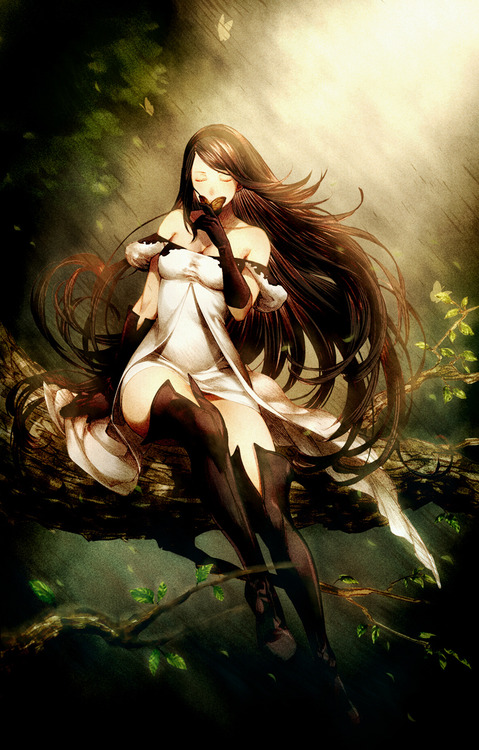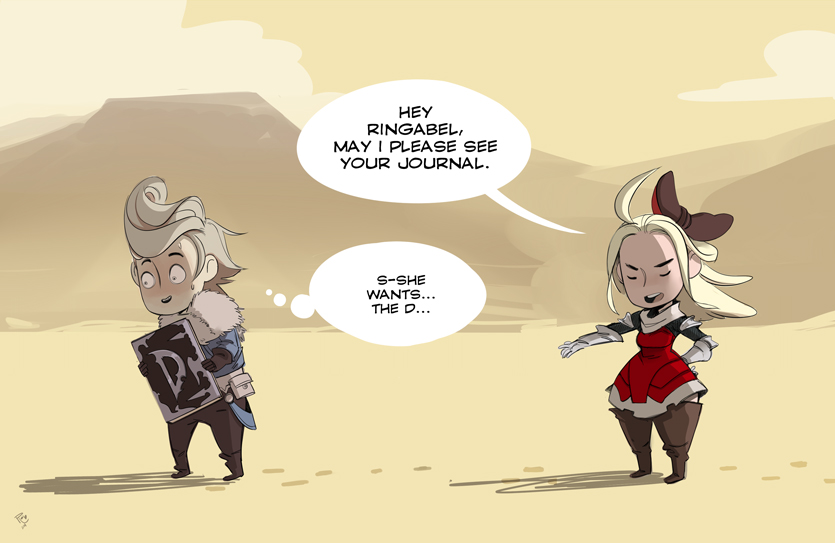Blog / Bravely Diffident
- Date
- January 24, 2017
- Tags
Bravely Default is the most anime game I’ve ever played. It’s the animest (/ˈæn.ɪ.meɪɛst/).

You control an innocent farm boy named Tiz, the kind of blank-stare everyman Invader Zim might terrorize. He’s joined by Agnès, priestess and beneficiary of modern Unicode text input, who attempts to save the world by being really really demure at everyone.
For the wind has stopped (forcing the inhabitants of a desert town into Mechanical Turk-style slavery) and the seas are rotted (you can’t even take a boat out, how is everyone not starving) but the real tragedy is apparently the annihilation of Tiz’s peasant village by what must have been Bahamut Zero. That motivates Agnès to Bravely Despair over the smoking crater and to try to Bravely Desert young Tiz later.
Filling out your well-dressed quartet of Kewpie dolls are:
- Ringabel, the horny amnesiac whose name is super clever to an eight year-old, and
- Edea, an excitable General Leo determined to understand why the evil empire is evil
So it’s a paint by numbers plot, where the bad guys have names like Ominas and the council of villains schemes on-screen for your benefit. New jobs are unlocked by defeating bosses, Mega Man-style, which I found a little disturbing. Each one has a real personality, making them feel like cosplayers we murdered to claim their outfits. Mega Man’s Robot Masters didn’t talk, threaten, bribe, eat, or sleep. You could have replaced them with a jumping, shooting eggplant and it wouldn’t have affected the game.
Note to self: reduce budget for Mighty No. 10.
However much I rag on it, Bravely Default’s plot is acceptable. It’s clichéd and straightforward, but it doesn’t cheat. It also features a great improvement to turn-based RPG combat: the Brave/Default system, where you can “bank (Default)” or get an “advance (Brave)” on up to four turns for each character.
For the first hour I played it utterly straight-laced, never taking more than one Brave in each round, and carefully playing my Defaults to the max. It seemed like a fun extension to the usual style. Then I saved, and wondered what would happen if my fighters took as many Braves as they could.
Oh. Ohhh.
Having a monk attack four times in a row, followed by four swipes from Edea as a knight, is usually enough to wipe out anything short of a boss. You can analyze every monster in one round and hit their weak points in the next. If everyone is on death’s door you can cast Cure enough times to bring them back from the brink. Even enemies can do it, tossing multiple wrenches in your plan. This changes… well, a lot. Not everything, but plenty. Combat with trash monsters is quick and easy, and battles against bosses become tugs-of-war, gambles with your lives. Combined with the deep job system, it makes even grinding compelling.
Against the monsters, that is. Not watching Ringabel grind against anything in a skirt.

